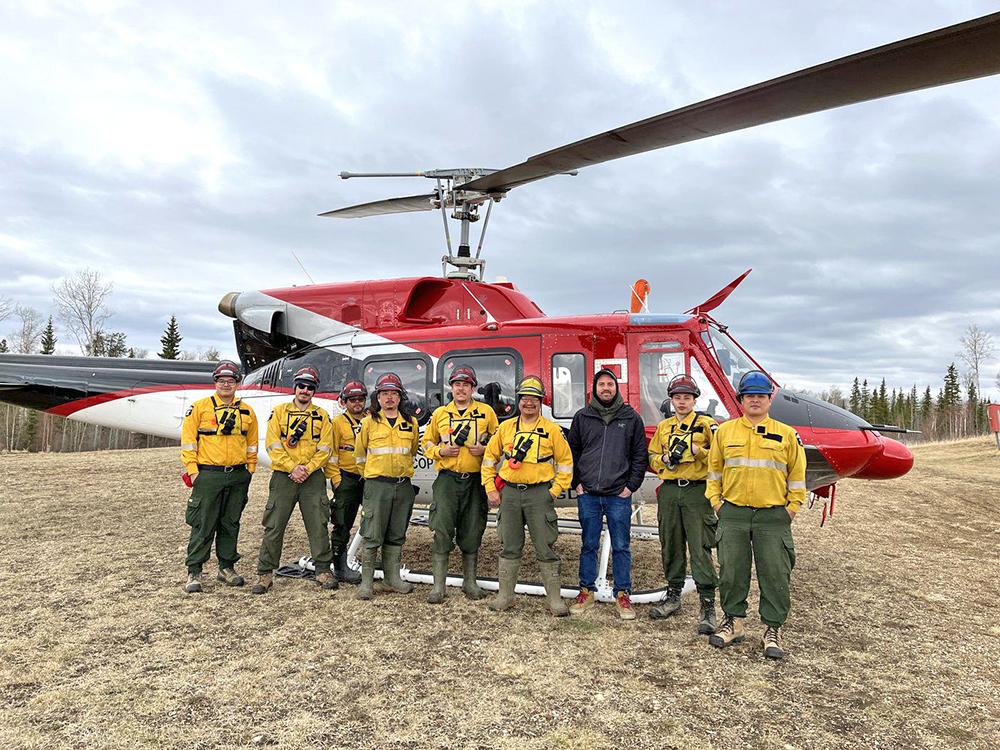
Scott Hayes
Local Journalism Initiative Reporter
Much needed rain and cooler weather in many areas of the province over the previous week was the surprise wildland firefighter recruit.
Minister of Forestry and Parks Todd Loewen and Alberta Wildfire information unit manager Christie Tucker said during the Thursday (May 2) weekly provincial wildfire update, that the changing weather of snow and rain aided in the early start of the wildfire season.
“Any amount of precipitation helps curtail active wildfires and we’re grateful for the help from Mother Nature,” Loewen said. “This change in the weather has also allowed us to reduce the size of certain fire restrictions and completely remove other restrictions or advisories in certain areas.
“Recent cooler weather and precipitation has meant wildfire activity has been more subdued this week. We’ve managed to extinguish a number of wildfires, including some of those carryover wildfires that had been burning since last year,” Tucker said.
As of Thursday afternoon, there are 40 active wildfires in Alberta and 233 have been extinguished this year, according to the Alberta Wildfire status dashboard. With the exception of one active four-hectare fire near Medicine Hat, all wildfires are north or west of Edmonton.
Statistics from the Alberta Wildfire dashboard noted that 10 of the wildfires are under control and two are being held. Of the wildfires this year, 175 have been deemed to be started by people and 73 are under investigation.
Tucker advised Albertans not to be lulled into a false sense of security. As quickly as wet weather can come in and drench some wildfires or dry land, it can wisp away back into the ether.
This is especially true for areas with built-up drought conditions, where it is still easy for some warm, dry, windy days to raise the wildfire danger level again, she said.
“Please keep in mind that a few days of cold weather and precipitation will not reverse the many months of drought that we have seen in some areas. Larger vegetation such as dead logs and deep built-up organic layers on the forest floor remain dry, and they can still provide fuel for a wildfire.”
The province’s wildland firefighting team has been able to respond quickly and effectively to wildfires across the landscape. That, coupled with enhancements made to wildfire operations has made a positive impact on our response so far this year, Loewen added.
“That said, Albertans and visitors to our province must continue to remain vigilant.”
He said a collective effort toward wildfire prevention is necessary, and it can be as easy as making a phone call. When wildfire broke out near Edson a few weeks ago, a call to 310-FIRE (3473) enabled Alberta Wildfire to respond quickly.
“In the following 24 hours, we were able to get that wildfire under control. Without that 310-FIRE report, the wildfire could have gone unnoticed for a longer period of time, creating an even larger fire,” he said.
They both reminded Albertans to always pay attention to fire bans, restrictions and advisories.
As far as Alberta’s wildland firefighting team goes, preparations continue and new staff are completing training and being stationed across the forest protection areas along with aircraft, heavy equipment and other resources, Tucker said.
Loewen also said anyone with heavy equipment suitable for wildfire response can still take the opportunity to complete a contract offer process that will help ensure that Alberta Wildfire has access to these valuable assets throughout the wildfire season.
“Heavy equipment plays a crucial role in creating breaks to slow the spread of wildfire, greatly improving suppression efforts. The more contractors we have in place with heavy equipment, the greater our capacity to combat wildfires throughout the province when many are burning simultaneously,” he said.
Scott Hayes
Local Journalism Initiative Reporter
Jasper Fitzhugh


